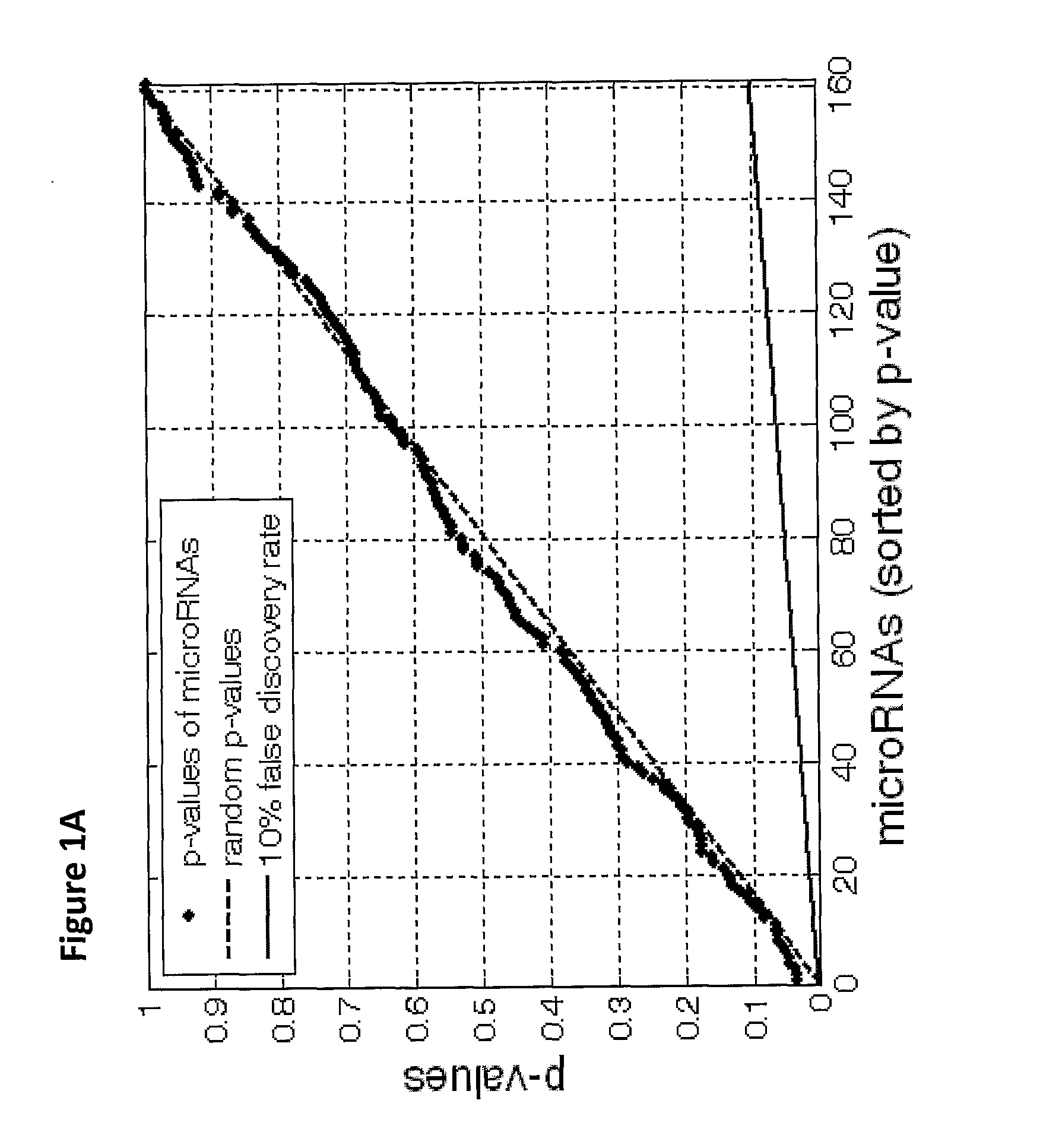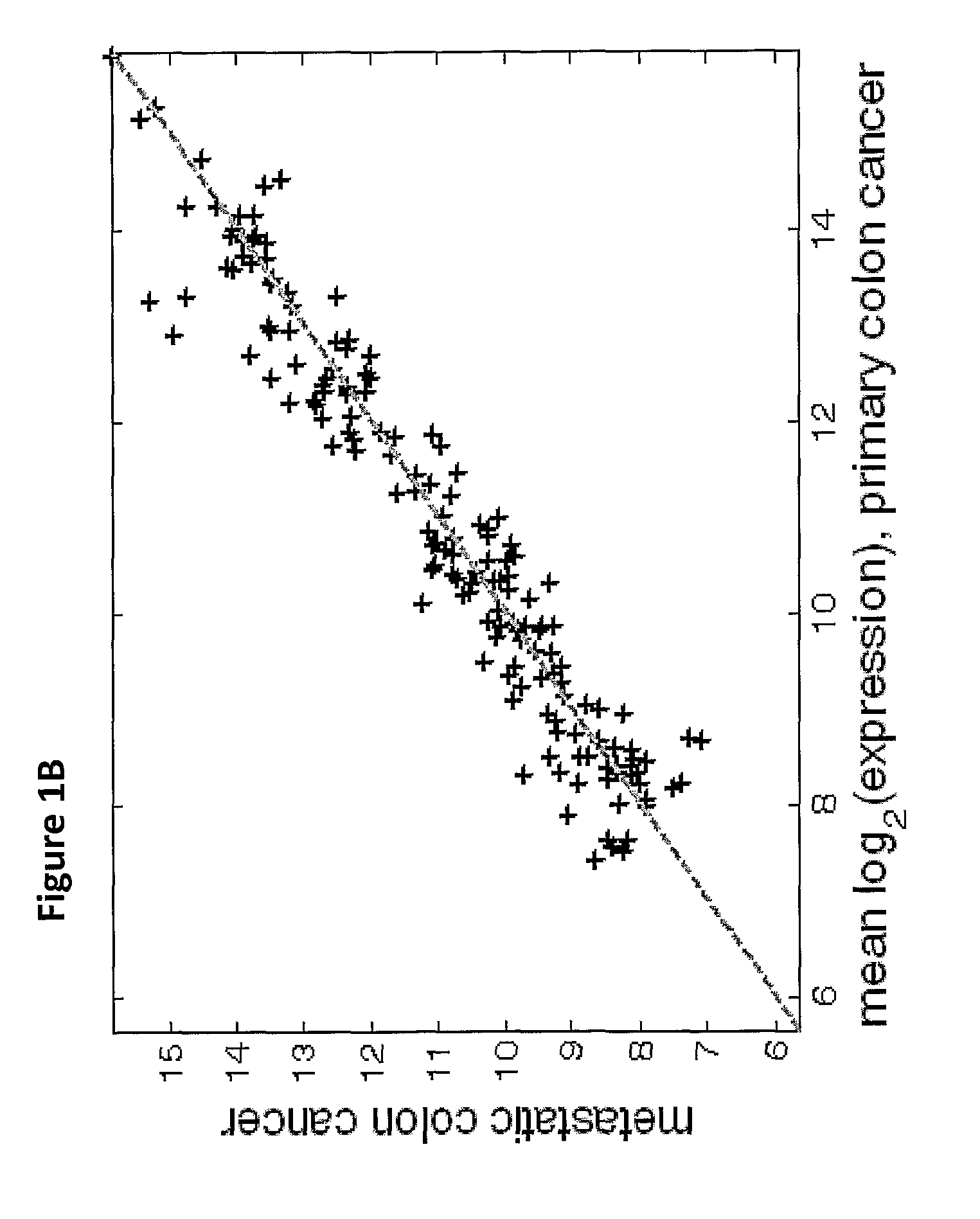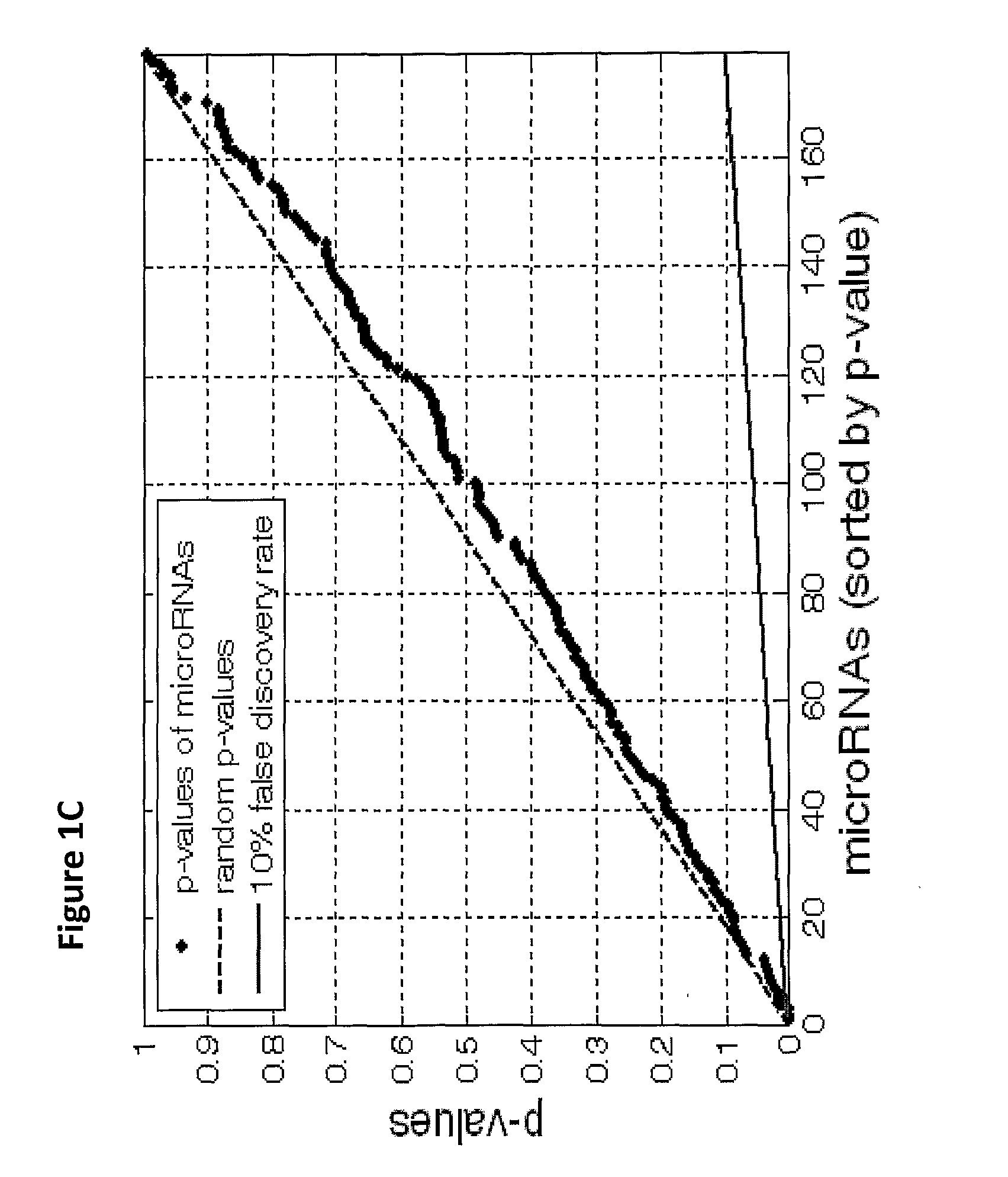Gene expression signature for classification of cancers
a gene expression and classification technology, applied in the field of methods for classification and identification of cancers, can solve the problem that the diagnostic accuracy of tumor markers has not yet been defined
- Summary
- Abstract
- Description
- Claims
- Application Information
AI Technical Summary
Benefits of technology
Problems solved by technology
Method used
Image
Examples
example 1
Samples and Profiling
[0199]Since formalin-fixed paraffin-embedded (FFPE) archival samples are an important source for tumor material, we developed a method for extracting RNA from FFPE blocks which preserves the microRNA fraction. We compared RNA extracted from fresh-frozen, formalin-fixed, or FFPE samples, and demonstrated that the RNA quantity and quality was similar for all preservation methods. Furthermore, the microRNA profile was stable in FFPE samples for as long as 11 years of storage.
[0200]MicroRNA profiling was performed on Rosetta Genomics' miRdicator™ microarrays19, containing probes for all microRNA in miRBase (version 9)3.
[0201]333 FFPE samples and 3 fresh-frozen samples were collected and profiled, including 205 primary tumors and 131 metastatic tumors, representing 22 different tumor origins or “classes” (see Table 1 for a summary of samples). Tumor percentage was at least 50% for more than 90% of the samples. 83 of the samples (approximately 25% of each class) were ...
example 2
Comparison of Primary and Metastatic Tumors
[0202]Due to the difficulty of obtaining sufficient numbers of metastatic samples, this study has relied on primary tumors to augment the sample set. Differences in expression profiles between primary and metastatic samples can be expected because of underlying biological differences in the tumors, or because of contamination from neighboring tissues. Such effects can hinder the performance of tumor classifiers on metastatic samples.
[0203]For most tissue origins, such as breast cancer or colon cancer (FIGS. 1A, B), no significant differences between primary and metastatic tumors were found. In other cases, a small set of microRNAs were differentially expressed. For example, in comparing stomach primary tumor samples to samples of stomach metastases to the lymph node, 3 microRNAs were significantly differentially expressed (FIGS. 1C, D). Hsa-miR-143 (SEQ ID NO: 99), characteristic of epithelial layers5, and hsa-miR-133a (SEQ ID NO: 97), whic...
example 3
Decision-Tree Classification Algorithm
[0204]A tumor classifier was built using the microRNA expression levels by applying a binary tree classification scheme (FIG. 2). This framework is set up to utilize the specificity of microRNAs in tissue differentiation and embryogenesis: different microRNAs are involved in various stages of tissue specification, and are used by the algorithm at different decision points or “nodes”. The tree breaks up the complex multi-tissue classification problem into a set of simpler binary decisions. At each node, classes which branch out earlier in the tree are not considered, reducing interference from irrelevant samples and further simplifying the decision (FIG. 3A). The decision at each node can then be accomplished using only a small number of microRNA biomarkers, which have well-defined roles in the classification (Table 2). The structure of the binary tree was based on a hierarchy of tissue development and morphological similarity18, which was modifi...
PUM
| Property | Measurement | Unit |
|---|---|---|
| Fraction | aaaaa | aaaaa |
Abstract
Description
Claims
Application Information
 Login to View More
Login to View More - R&D
- Intellectual Property
- Life Sciences
- Materials
- Tech Scout
- Unparalleled Data Quality
- Higher Quality Content
- 60% Fewer Hallucinations
Browse by: Latest US Patents, China's latest patents, Technical Efficacy Thesaurus, Application Domain, Technology Topic, Popular Technical Reports.
© 2025 PatSnap. All rights reserved.Legal|Privacy policy|Modern Slavery Act Transparency Statement|Sitemap|About US| Contact US: help@patsnap.com



